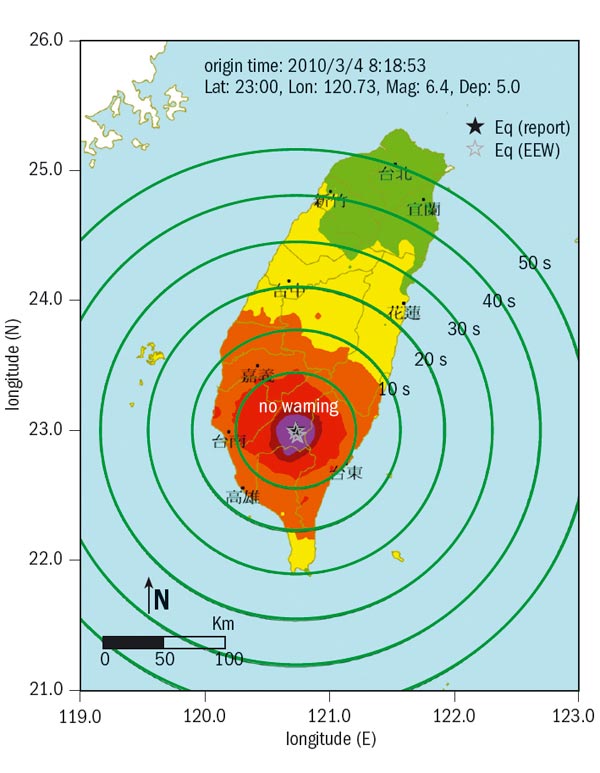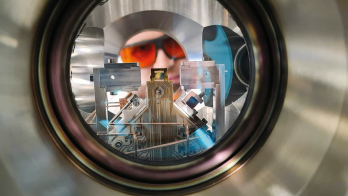A look at the unique aspects of a project to promote awareness of Grid computing.

More than half of the world’s people live in Asia. Even putting aside the two titans India and China, there are some 600 million inhabitants – 100 million more than in the entire EU – in the region that is commonly referred to as South-East Asia. From Myanmar in the west to Indonesia’s Papua province in the east, the territory is nearly twice the width of the continental US. Most of the Asian partners in EUAsiaGrid hail from this region, which has more than its fair share of natural disasters in the form of earthquakes, volcano eruptions, typhoons and tsunamis, not to mention enduring political tensions.
Despite these challenging circumstances, EUAsiaGrid has managed to make a significant impact in a relatively short time. This has been driven by increased sharing of data storage and processing power between participating institutions in the region. It was achieved through a concerted effort by the project leaders to encourage the adoption across the region of the gLite middleware of Enabling Grids for E-sciencE (EGEE), which is the same middleware used by the Worldwide LHC Computing Grid (WLCG).
As the head of EUAsiaGrid, Marco Paganoni, who is based at INFN and the University of Milan-Bicocca, points out: “This technological push has enabled researchers in some of the participating countries to become involved in international science initiatives that they otherwise might not be able to afford to participate in.”
EUAsiaGrid owes its origins to the pioneering efforts of the global high-energy physics community
Like many other international Grid projects, EUAsiaGrid owes its origins to the pioneering efforts of the global high-energy physics community to promote Grid technology for science, and to the nurturing role of the European Commission in spreading Grid technical know-how throughout the world through joint projects. In addition, a key catalyst for EUAsiaGrid has been Simon Lin, project director of Academia Sinica Grid Computing (ASGC). His efforts established ASGC as the Asian Tier-1 data centre for WLCG. He and his team have been bringing Asian researchers together for nine years at the annual International Symposium on Grid Computing (ISGC) held each spring in Taipei.
The EUAsiaGrid project, launched as a “support action” by the European Commission within Framework Programme 7 in April 2008, focuses on discovering regional research benefits for Grid computing. “We realized that identifying and addressing local needs was the key to success in this region,” says Paganoni. From the outset, capturing local e-science requirements was an important component of the project’s objectives. Moreover, comparing those requirements revealed a great deal of common ground amid all of the regional diversity.
Earth-shaking experience

Image credit: Nai-Chi Hsiao, Central Weather Bureau, Taipei.
One common theme was the region’s propensity for natural disasters and the ability of Grid technology and related information technology solutions to help mitigate the consequences of such events. For example, EUAsiaGrid researchers have helped build links between different national sensor-networks, such as those of Vietnam and Indonesia. Researchers in the Philippines are now benefiting from the Grid-based seismic modelling experience of their Taiwanese partners. Sharing data and Grid know-how in this manner means that the scientists involved can better tune local models of earthquake and tsunami propagation.
At the most recent ISGC, which was held in March, a special EUAsiaGrid Disaster Mitigation Workshop devoted a day to the latest technological progress in monitoring and simulating both earthquakes and tsunamis. Nai-Chi Hsiao of the Central Weather Bureau in Taipei explained in a talk about the early-warning system for Taiwan that it takes just 60 s for an earthquake to travel from the south to the north of the island, leaving precious little time to make a decision about shutting down nuclear reactors or bringing high-speed trains to a grinding halt and so avoid the worst consequences that a large earthquake might cause.

Image credit: Wen-Tzong Liang, Institute of Earth Sciences Academia Sinica.
Where could Grid technology fit into this picture? The island is rocked by earthquakes, both large and small, all of the time. It is simply not viable to shut down power plants and stop trains every time that a tremor is detected. What is needed is a quick prediction of the impact that a particular earthquake may have on key infrastructure across the island. However, the level of shaking that an earthquake produces 100 km away can depend strongly on, for example, the depth at which it occurs.
There is certainly no time to do a full simulation once an earthquake is detected. According to Li Zhao of the Institute of Earth Sciences at Academia Sinica, it might instead be possible to pull out a pre-processed simulation from a database and make a quick decision based on what it predicts. This would require processing and storing the results of simulations for a huge number of possible earthquake epicentres – a task that is well suited to Grid computing.
Neglected diseases
Another common thread of the research sponsored by EUAsiaGrid has been searching for cures to diseases that plague the region but which have been largely neglected by pharmaceuticals companies because they do not affect more lucrative markets in the industrialized world.
Consider dengue fever, for example. For most sufferers, the fever and pain produced by the disease pass after a very unpleasant week, but for some it leads to dengue haemorrhagic fever, which is often fatal. Like malaria, dengue is borne by mosquitoes. But unlike malaria, it affects people as much in the cities as it does in the countryside. As a result, it has a particularly high incidence in heavily populated parts of South-East Asia and it is a significant source of infant mortality in several countries.

Image credit: WHO.
As yet there are no drugs designed to specifically target the dengue virus. So EUAsiaGrid partners launched an initiative last July called Dengue Fever Drug Discovery, which will start a systematic search for such drugs by harnessing Grid computing to model how huge databases of chemical compounds would interact with key sites on the dengue virus, potentially disabling it.
This is not the first time that Grid technology has been used to amplify the computing power that can be harnessed for such ambitious challenges. Malaria and avian influenza have been targets of previous massive search efforts, dubbed by experts “in-silico high-throughput screening”.
Leading the effort on dengue at Academia Sinica in Taipei is researcher Ying-Ta Wu of the Genomics Research Centre. He and colleagues prepared some 300,000 virtual compounds to be tested in a couple of months, using the equivalent of more than 12 years of the processing power of a single PC. The goal of this exercise was not just to get the processing done quickly but also to encourage partners in Asia to collaborate on sharing the necessary hardware, including institutes in Malaysia, Vietnam and Thailand.

Image credit: Muhammad Mahdi Karim.
It is not just hard sciences such as geology and biology that benefit from Grid know-how. Indeed, as Paganoni notes: “Modelling the social and economic impacts of major disasters and diseases is a Grid-computing challenge in itself, and is often top of the agenda when EUAsiaGrid researchers have discussions with government representatives in the region.”
Even the humanities have benefited from these efforts. Capturing culture in a digital form can lead to impressive demands for storage and processing. Grid technology has a role to play in providing those resources. For instance, it can take more than a week using a single desktop computer to render a 10-minute recording of the movements of a Malay dancer performing the classical Mak Yong dance into a virtual 3D image of the dancer, using motion-capture equipment attached to the dancer’s body. Once this is done, though, every detail of the dance movement is permanently digitized, and hence preserved for posterity, as well as being available for “edutainment” applications.
The problem, however, is that a complete Mak Yong dance carried out for ceremonial purposes could last a whole night, not just 10 minutes. Rendering and storing all of the data necessary for this calls for Grid computing.

Image credit: Info Com Development Centre of Universiti Putra Malaysia.
Faridah Noor, an associate professor at the University of Malaya, became involved in the EUAsiaGrid project because she saw great potential for Grid-enabled digital preservation of traditional dances and artefacts for posterity. She and her colleagues are working on several projects to capture and preserve digitally even the most ephemeral cultural relics, such as masks carved by shamans of the Mah Meri tribe used to help cure people of their ailments or to ward off evil. The particular challenge here is that the shamans deliberately throw the masks into the sea as part of the ritual, to cast away bad spirits.
As Noor, who works in the area of sociolinguistics and ethnolinguistics, points out: “We have to capture the story behind the mask.” Each mask is made for an individual and his or her illness, so capturing the inspiration that guides the shaman while preparing the mask is as important as recording the way in which he carves the wood, and rendering 3D images of the resulting mask.
An important legacy of the EUAsiaGrid project, Paganoni says, will be the links that it has helped to establish between researchers in the natural sciences, the social sciences and the humanities, both within South-East Asia and with European institutions. These links trace their origin to a common interest in exploiting Grid technology.
• Based on articles previously published in International Science Grid This Week, with permission.







